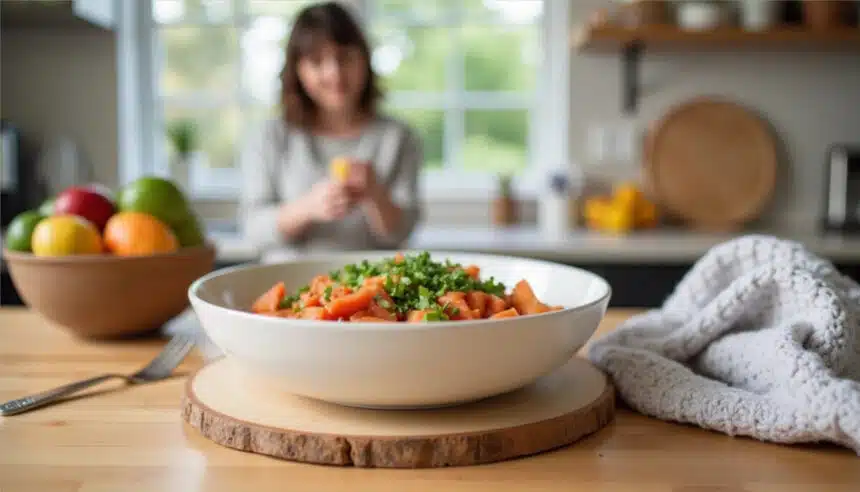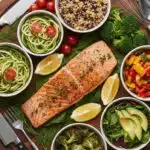If you’ve been religiously swapping out donuts for “healthy” granola bars but still stare at the scale wondering what’s up, recent research might just ruffle your cereal bowl. A first-of-its-kind trial out of University College London teamed up with UCL Hospitals NHS Trust to pit ultra-processed convenience grub against humble scratch-made fare—with eye-opening results.
The Trial That Shook Up Nutrition Science
For eight weeks, 55 adults with an average BMI of 32 were handed two diets with identical nutrition labels. One was stuffed with the usual suspects—breakfast bars, ready-made lasagna, those grab-and-go heat-and-eat bowls. The other? Pure, minimally tweaked food: oats soaked in milk, natural yogurt, homemade spaghetti bolognese. Participants could eat as much—or as little—as they liked, with all meals delivered straight to their doors. No menu planning, no calorie counting, no moralizing—just eat. Simple, right?
When the smoke cleared, the homemade champions had lost twice the weight of the UPF eaters. Think about that: despite both groups munching nutritionally “healthy” options, ditching the industrial processing seemed to supercharge weight loss. Over a year, men might drop 13% of their body weight, women 9%, if this trend keeps pace. And no, it isn’t magic.
What Counts as “Minimally Processed,” Anyway?
Minimally processed foods are pretty much what grandma cooked—fruits, veggies, whole grains, plain meat, fish, even natural yogurt. Little tinkering beyond basic cleaning and chopping.
Ultra-processed foods (UPFs), on the other hand, are the Frankenstein creations of food science: loaded with artificial flavors, preservatives, emulsifiers. They’re engineered to be soft, calorie-dense, and—let’s face it—addictive.
Why Scratch Cooking Packs a Weight-Loss Punch
Honestly, I was skeptical at first. Can cooking from scratch really trump a perfectly balanced frozen meal? But here’s the thing: textures and satiety matter more than we realize. When you chew chewy whole grains or chunk through fresh veggies, your brain registers fullness differently. UPFs slide down faster, so you end up grabbing that second—or third—serving without noticing.
“Oh, but they’re equally healthy, right?” Well, not quite. Sure, both diets labored under the same macros, but calories consumed told a different story. Minimally processed eaters consumed 290 fewer calories daily and lost about 2% of their body weight. UPF fans shaved off only 1%, despite cutting 120 calories—suggesting that whole-food textures help curb overeating.
Cravings, Willpower, and…Plastic Trays?
I’ve been on a diet where I dreamt about the lettuce—I mean, cringe. But this study revealed fewer cravings and stronger resistance when people stuck to scratch-made meals. It’s counterintuitive: most of us brace for misery when we diet, yet eating real food seemed to soothe the soul (and stall the snack attack). Maybe it’s the ritual of cooking, the pride in slicing bell peppers, that trickles into our mindset. Or maybe it’s just that real food doesn’t whisper, “Come back for more!” in your subconscious.
Beyond the Plate: Policies and Prices
This isn’t just academic. Prof. Chris van Tulleken, co-author and writer of Ultra-Processed People, argues we need to look past individual “willpower” and at how multinational food giants shape our choices. Dr. Adrian Brown points out that healthy meals can cost twice as much as their crappy counterparts—yeesh.
So what’s the fix? Think warning labels, marketing restrictions, progressive taxes on UPFs, and subsidies for farmers growing whole foods. The Department of Health and Social Care in the UK is already sniffing around for more UPF impact research, while the Soil Association says it’s time to retool government guidelines.
Bringing It Home: Tips for the Scratch-Kitchen Rookie
- Keep it simple: batch-cook a pot of beans or whole-grain rice.
- Shop perimeter-first: fresh produce and meats tend to hide along the walls of the grocery store.
- Embrace one-pot wonders: fewer dishes, more flavor.
- Sneak in vegetables: that morning smoothie? Toss in spinach or frozen berries—you won’t taste the difference, promise.
- Make swap lists: choose plain yogurt over flavored cup versions; cauliflower rice instead of microwavable pilaf.
Yes, there will be spills. Yes, it feels slower at first. But after sweating over a bubbling sauce, you’ll look at that ready meal the same way you eye that expired carton in the back of your fridge—no thanks.
At the end of the day, this study isn’t about shaming anyone. It’s an invitation to rethink how we eat and what we consider “healthy.” Could eight more minutes chopping veggies change your weight-loss destiny? I’d wager it can.
What’s your take? Are you team scratch-cook or convenience crusader? Leave a comment below, share your kitchen wins (or fails), and don’t forget to follow us on Facebook and Instagram for more real-life weight-loss insights. Let’s get cooking—no plastic tray required.
Sources:
- www.theguardian.com/society/2025/aug/04/home-cooking-and-minimally-processed-foods-best-for-weight-loss-upf-study-finds
- www.edition.cnn.com/2025/08/04/health/weight-loss-ultraprocessed-food-wellness
- www.nytimes.com/2025/08/04/well/eat/avoiding-ultraprocessed-foods-might-double-weight-loss.html

Say Hi to SelfWeightLoss’s Guest Authors! Many talented authors have submitted their article and contributed to get it bigger. Browse through this page. You may find the right author for you. If you think you would like to contribute to the blog, Please visit this page: https://selfweightloss.com/write-for-us and follow its guidance. Thank you!










